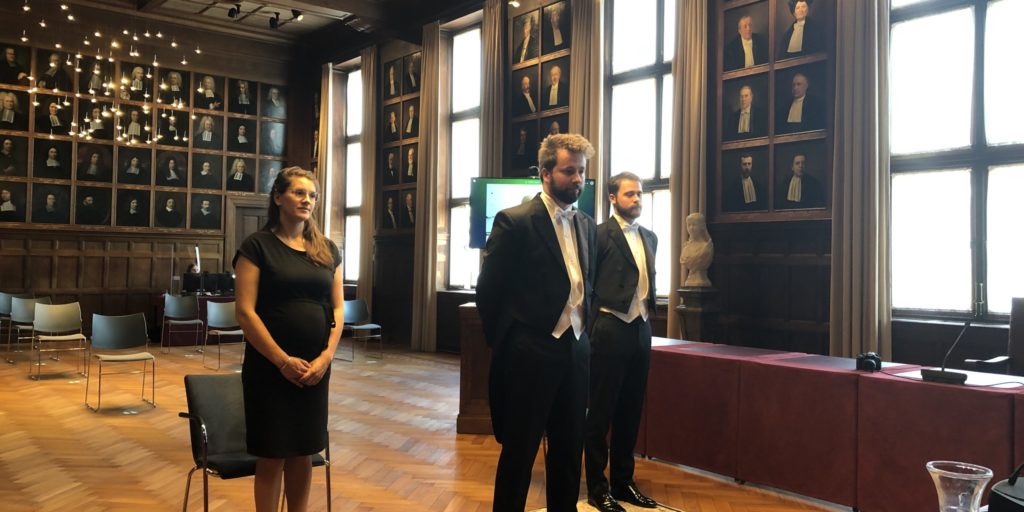PhD defense of Laurence Mandemaker
In this Ph.D. Thesis, thin layers of solid catalysts were studied using advanced microscopic and spectroscopic techniques. These catalysts, better known as metal-organic frameworks (MOFs), consist of metal clusters which are interconnected with linker molecules, building a 3D porous crystalline structure with many potential applications. The thesis focusses on the birth, or synthesis/formation and the life, or activity and applications, of such catalytic films. Furthermore, an outlook is given on how the death, or deactivation, could be studied and better understood.
In all these stages, atomic force microscopy (AFM) and infrared (IR) spectroscopy play a major role. Whereas AFM is used to study the formation, stability or characteristics of the morphology of the materials, IR spectroscopy gives vibrational “fingerprints” specific to certain chemical bonds or interactions. By combining these and several complementary techniques, growth mechanisms were found directly from the liquid synthesis solution. Furthermore, it was shown that these films can be made by a variety of synthesis methods, which also induce different characteristics of the formed material. This could be utilized to tune the specific product to be more suitable for the reaction it needs to catalyze. Furthermore, a method was developed in which these films could be grown on transparent windows, which opened the toolbox to transmission-based techniques, yielding more information on the specific materials active site.
In short, the presented microscopic and spectroscopic toolbox was utilized to follow and understand different important phases in the life of a MOF thin-film, gaining new insights in their specific growth and active behavior for certain applications.
Congratulations on this achievement!
Source: website Utrecht University

